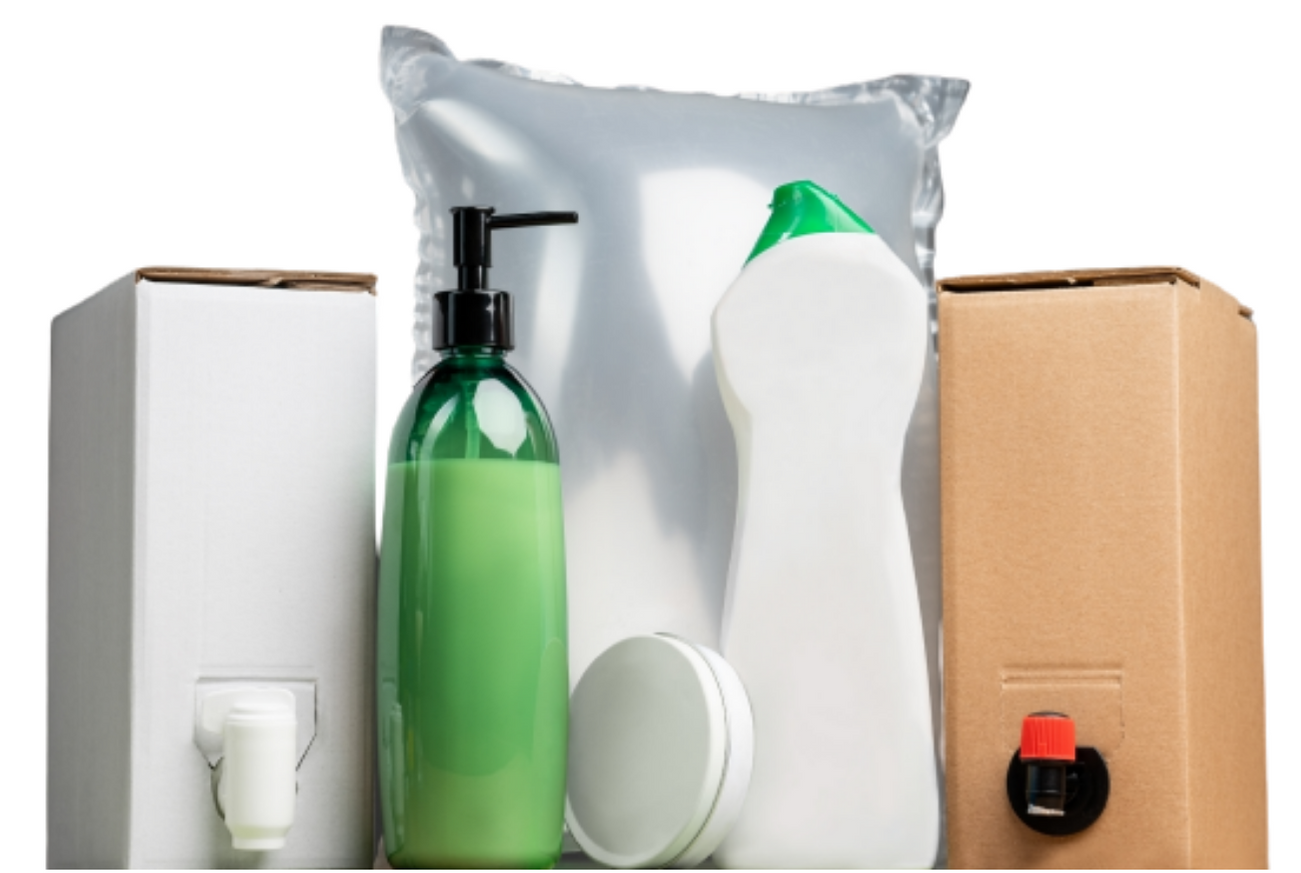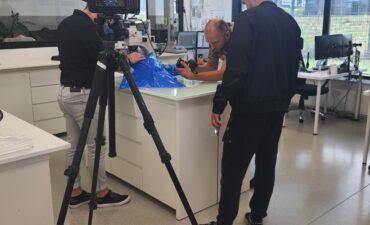CHEMISTRY IN BAG IN BOX
THE FUTURE FOR THE CHEMICAL INDUSTRY

![]()
![]() Sulfuric acid, used as an electrolyte for industrial batteries, was one of the first products packed in bag-in-box that we know well today. In the era of the packaging revolution, in the 80’s, bag in box packaging was used mainly in the food industry, and since then, its increasing share in the packaging process has been observed. In the era of another packaging revolution dictated by environmental considerations, the dynamic development of modern and safe raw materials and the growing pro-ecological awareness of consumers, a dynamic increase in the share of flexible bag-in-box packaging for packaging chemicals in a broad sense is observed.
Sulfuric acid, used as an electrolyte for industrial batteries, was one of the first products packed in bag-in-box that we know well today. In the era of the packaging revolution, in the 80’s, bag in box packaging was used mainly in the food industry, and since then, its increasing share in the packaging process has been observed. In the era of another packaging revolution dictated by environmental considerations, the dynamic development of modern and safe raw materials and the growing pro-ecological awareness of consumers, a dynamic increase in the share of flexible bag-in-box packaging for packaging chemicals in a broad sense is observed.
Why bag in box? Safety, Economy and Environment!
Safety.
The list of chemicals is extensive. Currently, it is possible to pack substances such as adhesives, oils, chemicals, detergents, lubricants, paints or goods from the cosmetics industry, such as conditioners, lotions, shampoos and creams, into bag in box. All these products are demanding and often dangerous. The list is not exhaustive and there is an ever-growing interest in flexible packaging by chemical manufacturers from various industries.
Research and Development Centre BIBP Sp. z o.o. and its multidisciplinary, experienced team ensures that the process of selecting bag in box packaging is carried out in accordance with the standards that guarantee safety at every stage of the process: filling, storage, transport and distribution, use and disposal of empty packaging. Working in accordance with the PMI standard and Product Part Approval Process (PPAP) guarantees that the highest quality and safety standards will be met at every stage of the selection of packaging for chemicals, and that the entire creation process will be transparent and understandable to each of the parties.
The ability to access modern raw materials, quality control methods and analytical tools allows you to select components that meet the requirements of the market. The selection of materials takes into account the preservation of strength parameters measured by tests: flex cracking, drop test, burst test, etc. Great attention is paid to the stability of raw materials during the entire life cycle of the product (also when filled), through the use of aging tests, mechanical degradation, and microscopic analysis. It is important whether the packaging is subject to the ADR convention and if so, the design process takes into account the stringent requirements for this type of packaging. It is also worth mentioning a number of valves and taps compatible with the bag in box, thanks to which the dosing of the product is accurate, fast and safe, which is a key feature when dealing with products presenting a potential risk. Access to a wide base of suppliers gives extensive possibilities in the selection of taps and closures, depending on the density, viscosity and properties of a given product and the method of its dosing desired by the customer.
components that meet the requirements of the market. The selection of materials takes into account the preservation of strength parameters measured by tests: flex cracking, drop test, burst test, etc. Great attention is paid to the stability of raw materials during the entire life cycle of the product (also when filled), through the use of aging tests, mechanical degradation, and microscopic analysis. It is important whether the packaging is subject to the ADR convention and if so, the design process takes into account the stringent requirements for this type of packaging. It is also worth mentioning a number of valves and taps compatible with the bag in box, thanks to which the dosing of the product is accurate, fast and safe, which is a key feature when dealing with products presenting a potential risk. Access to a wide base of suppliers gives extensive possibilities in the selection of taps and closures, depending on the density, viscosity and properties of a given product and the method of its dosing desired by the customer.
Economy.
 Bag in box closures allow for easy and problem-free dosing of the product, thus there is no excessive draining or sticking of the medium. It is also related to the fact that during use there is no risk of air or any contaminants getting inside the packaging, therefore the product does not foam and does not splash. Another factor influencing performance is the fact that the bag’s flexible material allows its contents to be almost completely emptied. This is not possible when using standard containers, often of fancy shape, where a large amount of product is wasted and thrown away by being left inside. From a broader perspective, also the transport and storage in a bag in box are much more efficient. The shape of the cuboid as represented by the bag in box minimizes the so-called dead space, whether in a warehouse or on a pallet, and at the same time maximizes the transport capacity. On the other hand, empty, used packages are folded practically flat, so even after using the product, they do not take up unnecessary space.
Bag in box closures allow for easy and problem-free dosing of the product, thus there is no excessive draining or sticking of the medium. It is also related to the fact that during use there is no risk of air or any contaminants getting inside the packaging, therefore the product does not foam and does not splash. Another factor influencing performance is the fact that the bag’s flexible material allows its contents to be almost completely emptied. This is not possible when using standard containers, often of fancy shape, where a large amount of product is wasted and thrown away by being left inside. From a broader perspective, also the transport and storage in a bag in box are much more efficient. The shape of the cuboid as represented by the bag in box minimizes the so-called dead space, whether in a warehouse or on a pallet, and at the same time maximizes the transport capacity. On the other hand, empty, used packages are folded practically flat, so even after using the product, they do not take up unnecessary space.
Environment.
Another argument in favor of choosing a bag in box is that these bags have a significant impact on the waste management process.
BIB contains a much smaller amount of plastic compared to standard packaging (at least 60% less) while maintaining similar strength parameters. The individual components of bag in box packaging are recyclable even in 100%.
It is estimated that a HDPE canister with a volume of 5 dm3 (228 pieces on a EUR pallet) takes up a volume of 1.5 m3 before and after use, with the generated waste mass of approx. 35 kg (HDPE — 32.3, PP — 2.7 kg) . The same amount of empty 5 dm3 bag in box takes about 0.05 m3, and after use, these bags take about 0.077 m3 with a weight of about 10 kg PE. In this simple example, the mass of waste is 4 times smaller, and the volume of waste is nearly 20 times smaller. Of course, the costs associated with the transport of empty packaging, which are also significant, were not taken into account. Taking into account also the fact that the bag in box has a much smaller mass and occupies a smaller area, its transport and storage is more efficient. More efficient transport means lower fuel consumption, which in turn leads to less carbon dioxide emissions. Compared to bag-in-box with rigid packaging, the energy consumption is lower at every stage of production, use and disposal, and thus a lower carbon footprint during the production, filling, transport and recycling of packaging. Using dedicated tools (eg Carbon Footprint Calculator) it is possible to calculate specific values for the compared types of packaging.
It should be noted that the current production technology and the development process of these packaging places great emphasis on the selection of materials so that their reuse does not generate additional costs and technological challenges. In the design process, the use of multi-material laminates is abandoned, the separation process of which is sometimes technologically impossible, the excessive amount of prints and varnishes is eliminated by replacing them with cardboard packaging (100% recyclable or reusable), and materials that would hinder the process of separate collection and processing (multi-material plastic details).
In summary
The current technological possibilities in the field of the production of bag in box provide wide opportunities for the development of packaging for the chemical industry. Based on the data from the «Bag in Box Container» report by the economic intelligence agency Grand View Research (2020, USA), dynamic development of this type of packaging is forecasted in the years 2020-2027 by up to 7% annually.
For companies and organizations consciously striving to improve the environment around us, bag in box packaging by:
- improving the dosing efficiency
- reduction of product losses
- maintaining product quality
- safe storage of the product
- optimization of logistics costs
- significantly lower amount of generated waste
are the perfect solution. These are the functionalities of our bag in box.
Visit our SM:
![]() www.facebook.com/producentbaginbox
www.facebook.com/producentbaginbox
![]() www.linkedin.com/company/bag-in-box-poland
www.linkedin.com/company/bag-in-box-poland


